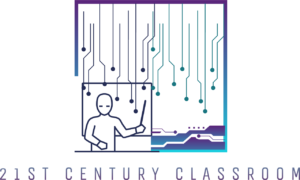Efficient classroom management is the cornerstone of a successful learning environment. By employing proven techniques, teachers can create an atmosphere that promotes productivity and engagement among students. In this article, we will explore a range of strategies that educators can implement to effectively manage their classrooms and enhance student learning outcomes.
Understanding Classroom Management:
Classroom management encompasses the practices and strategies employed by teachers to establish a positive and conducive learning environment. It involves setting clear expectations, building strong relationships with students, and implementing proactive measures to address behavioral challenges. The benefits of efficient classroom management extend beyond discipline; it fosters a sense of belonging, encourages active participation, and maximizes academic achievement.
Establishing Clear Expectations and Rules:
To create a well-managed classroom, it is crucial to establish clear expectations for behavior and academic performance. By involving students in the process and collaboratively developing classroom rules, they gain a sense of ownership and responsibility. Communicating these expectations effectively to students and parents ensures that everyone is aware of the standards and contributes to a harmonious learning environment.
Building Positive Teacher-Student Relationships:
Building positive teacher-student relationships is a fundamental aspect of classroom management. Creating a supportive and inclusive environment allows students to feel safe, respected, and valued. Teachers can achieve this by fostering rapport, demonstrating empathy, and actively listening to their students. Effective communication techniques, such as active listening and providing constructive feedback, play a vital role in establishing strong connections that promote engagement and productivity.
Implementing Proactive Strategies:
Proactive strategies are essential for preventing disruptions and maintaining a productive learning atmosphere. An effective classroom layout and organization, with designated areas for different activities, can contribute to smoother transitions and minimize distractions. Establishing routines and procedures provides structure and predictability, helping students stay focused and engaged. Visual aids and cues, such as timers and visual schedules, assist in managing time and guiding students through tasks effectively.
Employing Effective Instructional Strategies:
Instructional strategies directly impact student engagement and productivity. By implementing differentiated instruction, teachers can meet individual student needs and provide personalized learning experiences. Active learning techniques, such as cooperative learning, project-based learning, and hands-on activities, foster student engagement and deep understanding. Encouraging student participation and collaboration enhances the learning process and creates an environment conducive to growth and productivity.
Managing Challenging Behaviors:
Challenging behaviors can disrupt the learning environment and hinder student progress. Identifying and understanding the root causes of these behaviors is crucial for effective management. By implementing proactive strategies, such as positive behavior interventions and supports, teachers can prevent challenging behaviors before they escalate. However, when disciplinary actions are necessary, it is important to apply appropriate techniques that emphasize learning and growth rather than punishment.
Promoting Student Engagement:
Engaging students is vital for maintaining their interest and motivation. Integrating technology tools, such as interactive whiteboards or educational apps, can enhance learning experiences and capture students’ attention. Moreover, utilizing creative teaching methods, such as gamification, real-world connections, and multimedia presentations, make lessons more exciting and relevant. Allowing students autonomy and choice in their learning fosters a sense of ownership and increases engagement.
Monitoring and Assessing Student Progress:
Continuous monitoring and assessment provide valuable insights into student progress and allow teachers to provide timely feedback. Formative assessments, such as quizzes, discussions, and observations, help teachers understand student needs and adjust their instruction accordingly. Summative assessments, such as tests or projects, evaluate student achievement at the end of a unit or term. Data-driven decision-making enables teachers to make informed instructional adjustments that support student growth and improve overall outcomes.
Collaboration with Parents and Guardians:
Strong collaboration between teachers and parents is essential for student success. Establishing regular lines of communication with parents helps create a supportive network that reinforces classroom expectations and goals. Involving parents in their child’s education through parent-teacher conferences, newsletters, and online platforms fosters a sense of partnership. By collaborating with parents to address individual student needs and challenges, educators can create a unified support system that maximizes student potential.
Self-Reflection and Professional Development:
Effective classroom management requires continuous self-reflection and professional development. Regularly reflecting on teaching practices and seeking feedback from colleagues or mentors can help teachers identify areas for improvement. Actively pursuing professional development opportunities related to classroom management enables educators to stay updated with the latest research and best practices. By committing to ongoing growth, teachers can enhance their classroom management skills and provide an optimal learning experience for their students.
Takeaway
Efficient classroom management plays a vital role in fostering productivity and engagement among students. By establishing clear expectations, building positive relationships, and implementing proactive strategies, teachers can create an environment that promotes learning and growth. Through effective instructional strategies, collaboration with parents, and continuous self-reflection, educators can optimize classroom management and maximize student success. By dedicating themselves to these proven techniques, teachers become catalysts for creating an engaging and productive learning experience for all students.

